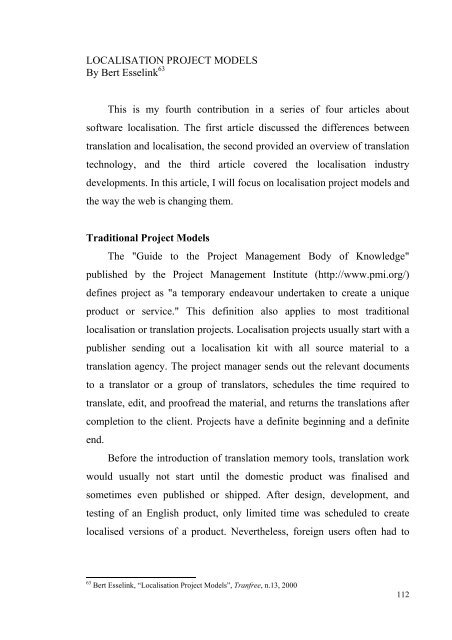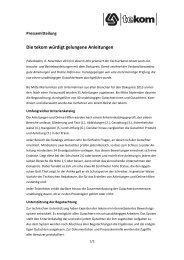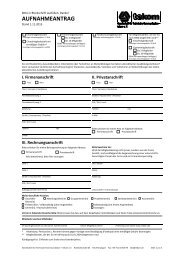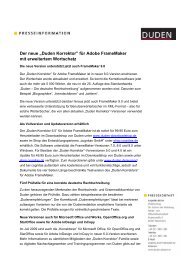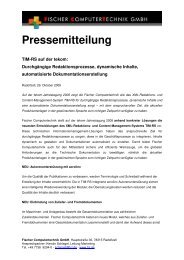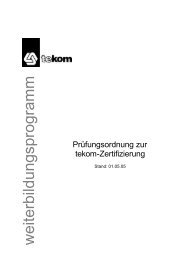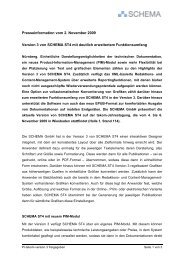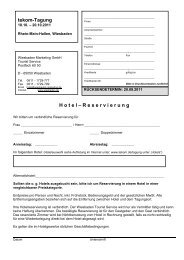qui - Tekom
qui - Tekom
qui - Tekom
Create successful ePaper yourself
Turn your PDF publications into a flip-book with our unique Google optimized e-Paper software.
LOCALISATION PROJECT MODELS<br />
By Bert Esselink 63<br />
This is my fourth contribution in a series of four articles about<br />
software localisation. The first article discussed the differences between<br />
translation and localisation, the second provided an overview of translation<br />
technology, and the third article covered the localisation industry<br />
developments. In this article, I will focus on localisation project models and<br />
the way the web is changing them.<br />
Traditional Project Models<br />
The "Guide to the Project Management Body of Knowledge"<br />
published by the Project Management Institute (http://www.pmi.org/)<br />
defines project as "a temporary endeavour undertaken to create a unique<br />
product or service." This definition also applies to most traditional<br />
localisation or translation projects. Localisation projects usually start with a<br />
publisher sending out a localisation kit with all source material to a<br />
translation agency. The project manager sends out the relevant documents<br />
to a translator or a group of translators, schedules the time re<strong>qui</strong>red to<br />
translate, edit, and proofread the material, and returns the translations after<br />
completion to the client. Projects have a definite beginning and a definite<br />
end.<br />
Before the introduction of translation memory tools, translation work<br />
would usually not start until the domestic product was finalised and<br />
sometimes even published or shipped. After design, development, and<br />
testing of an English product, only limited time was scheduled to create<br />
localised versions of a product. Nevertheless, foreign users often had to<br />
63 Bert Esselink, “Localisation Project Models”, Tranfree, n.13, 2000<br />
112


